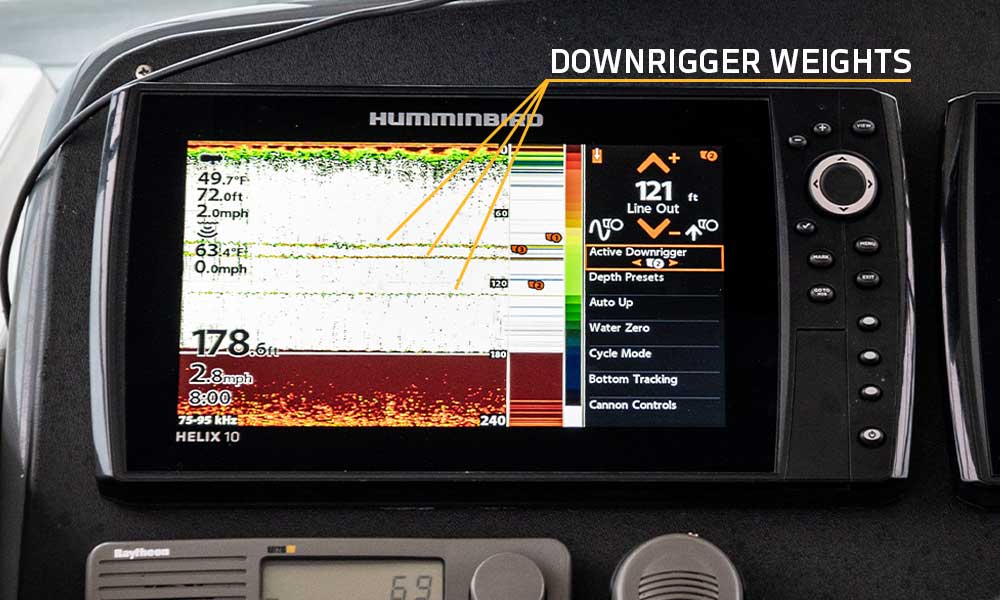Selecting the Best Downrigger Weight Size

A question we frequently receive is, "What is the best downrigger weight size to use when trolling?" The answer is actually pretty simple, but it comes down to trolling scenarios, the downrigger model you're using, and personal preference.
This article will break down the best downrigger ball sizes and explain why behind the recommended size.
What Size Downrigger Weight Is Best?
In its simplest form, the best downrigger weight size is typically the heaviest weight that your downrigger is rated for. That being said, other variables may determine the appropriate weight size, like desired trolling depth and speed, and current. The deeper the depth you'd like to target or the faster you plan to troll, the heavier the weight you should use.
A rule of thumb when it comes to depth and downrigger weight sizes (trolling speeds of about 2-3mph):
| Target Depth | Minimum Weight Size |
|
35ft or Less |
6lb Weight |
| 50ft or Less | 8lb Weight |
| 75ft or Less | 10lb Weight |
| 100ft or Less | 12 - 14lb Weight |
| 100ft or More | 16lb - 20lb Weight |

If you fish in shallower bodies of water like inland lakes or rivers, maybe an 8lb weight is all you need, conversely, if you're fishing in the Great Lakes, saltwater, or other deeper bodies of water, you may want to opt for a 10-20lb weight.
Tip for anglers using braided downrigger line – Sticking to an 8-10lb weight is recommended, regardless of water depth.
There are many benefits to trolling with the heaviest downrigger weight possible-and we will explain those next.
Benefits of Using a Heavier Downrigger Weight
Using a heavier downrigger weight will provide a few different benefits, including keeping your lines as vertical as possible, reducing downrigger blowback, keeping your downrigger weight closer to the boat and in your sonar cone angle, and helping avoid tangling with other lines.
Keep Your Downrigger Lines as Vertical As Possible
The biggest benefit of running a heavy downrigger weight is that the increased weight will keep the downrigger cables running as vertically as possible, ultimately reducing the amount of downrigger blowback on your weight, keeping your downrigger weights in your sonar beam and helping avoid tangles.
Blowback is the angle or horizontal distance between your downrigger ball and your downrigger. It is created by the resistance of the water to the downrigger weight and line as you pull it through the water behind your boat.

Downrigger blowback will give you an inaccurate depth reading because your lineout may read 100ft, but your actual trolling depth may be around 80ft deep (4mph trolling speed with an 8lb weight).
Check out our detailed article and charts on Downrigger Blowback for a deeper understanding.
Prevent Downrigger Line Tangles
With the heavier weight and more vertical deployment, your downrigger cables and lines will be closer to the boat, helping eliminate the possibility of tangles in other lines like divers and planers, especially after hooking a fish or making a turn.
Keep Your Downrigger Weights In Your Sonar Beam

The heavier weight and more vertical deployment will help keep your weight in the sonar beam, allowing you to see the weight on your sonar. This helps you better understand actual trolling depth and allows you to adjust your depth based on fish you may be marking on your sonar.
Get Your Downrigger Weight and Baits to The Strike Zone Quick
Heavier weights also allow you to quickly descend down to your desired depth, especially when trolling at greater depths (applies to manual downriggers).
Cannon Downrigger Flash Weights

Cannon offers a wide range of downrigger weight sizes for all types of anglers. These vinyl-coated downrigger balls prevent scratching the side of your boat and feature reflective prism tape on the fin for extra flash in the water, providing additional fish attraction to your spread.
These Cannon Downrigger Flash Weights come in various sizes to fit your trolling setup, including, 4lb, 6lb, 8lb, 10lb, 12lb, and 16lb weights.
Hopefully this article helps you make an easy decision when replacing or adding new downrigger weights to your arsenal.






